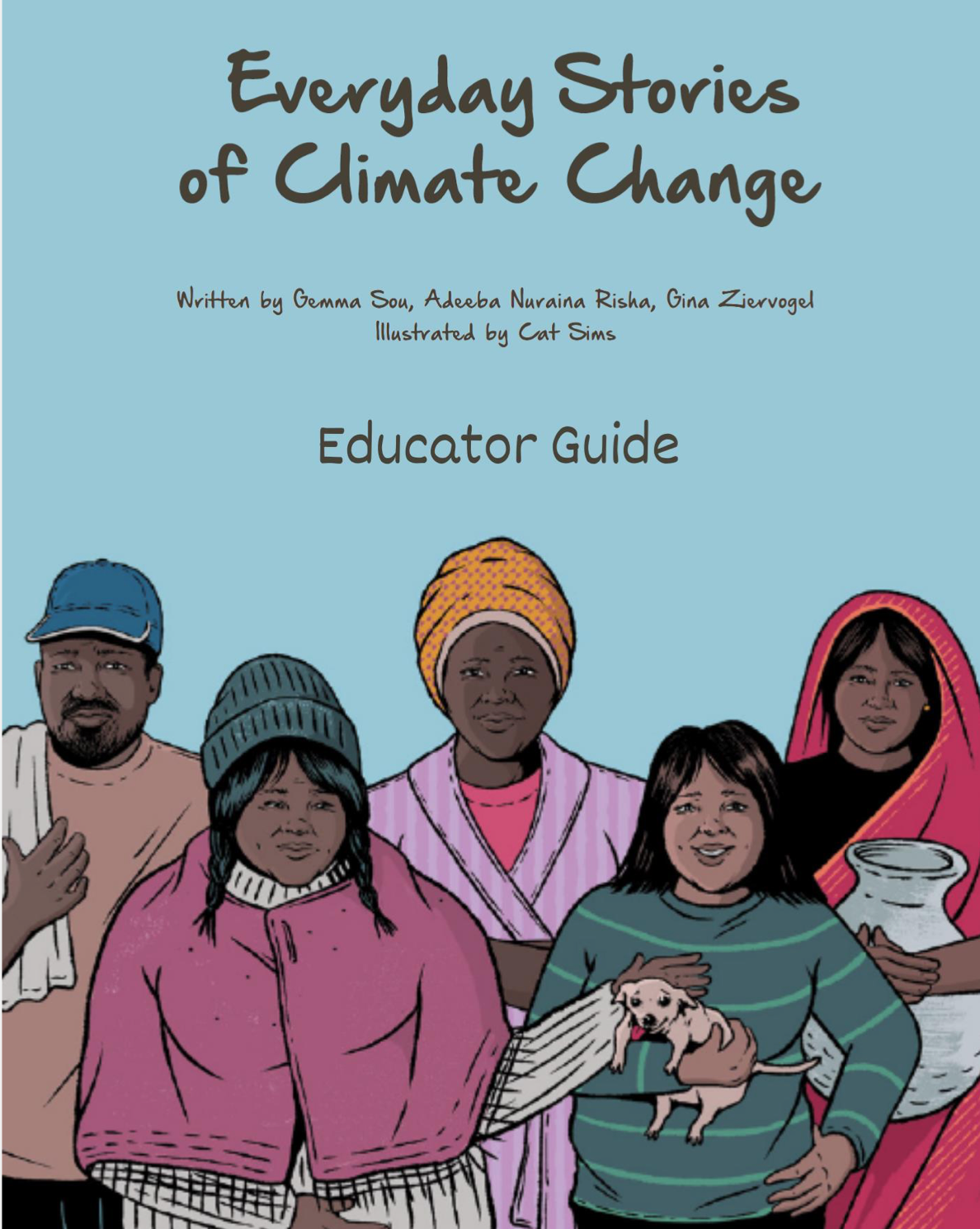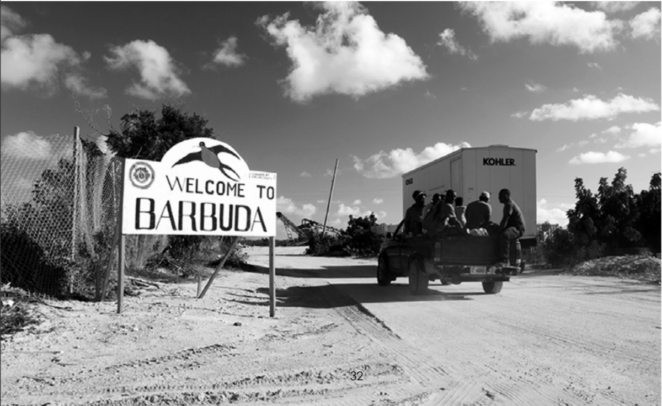Everyday Stories of Climate Change – Educator Guide and Graphic Novel

- Level: Introductory
- Time commitment:N/A
- Learning product:Guidance on adaptation
- Sector: multi-sector, youth
- Language:English
- Certificate available:No
Introduction
This Educator Guide and accompanying graphic novel provides support for teachers to connect students to the global impacts of climate change and how less economically developed communities adapt
The combination of activities and the novel empowers students to understand not only the environmental impacts, but also the social, cultural, racial, and political outcomes of climate change is key to creating informed global citizens.
Readers of the novel will explore the impacts of sea-level rise in Bangladesh, varied experiences of drought in South Africa, climate induced migration in Bolivia, the recovery of Hurricane Maria in Puerto Rico and the resistance of disaster capitalists Barbuda after Hurricane Irma. The novel also provides teachers and students with key information and discussion points to structure classroom activities.
This weADAPT article is an abridged version of the original text, which can be downloaded from the right-hand column. Please access the original text for more detail. The Everyday Stories of Climate Change Graphic Novel can be downloaded from Further Resources below.
Institutional background
The material for the Educator Guide and graphic novel have been developed for the Association of Victoria Geography Teachers’, Australia. The material is aimed at secondary education level. Authors of the both the Educator Guide and the graphic novel itself are:
- Dr. Gemma Souis a Vice Chancellor’s Fellowat RMIT University, Australia. She explores development in disaster-affected contexts, lived experiences of disasters, aid, and themedia representation of disasters.
- Adeeba Nuraina Rishais based at the Institute of Governance and Development at BRAC University in Bangladesh. She researches climate change impacts, resilience, climate migration, environmental policies and vulnerability.
- Dr. Gina Ziervogelis an Associate Professor at the University of Cape Town’s Department of Environmental and Geographical Science. She researches how citizens and local governmentsare responding to climate-related water issues in urban areas.
- Cat Simsis an artist based in London. Her work covers a broad range of mediums, from graphic design to comics and printmaking. She has worked as a freelance illustrator for over ten years.
Who would find it useful?
Secondary school teachers teaching climate change as a topic.
The teaching guide provides resources that are aimed at enhancingstudents’ understanding of the issues raised inEveryday Stories of Climate Change.The activities outlined below are suitable for Secondary education level. Educators should modify these resources as appropriate for their students. While most activities are more relevant to the Humanities or Geography subject areas, there are opportunities to study some of these topics in other subjects such as Science and English, allowing for a cross-curricular project. The table below shows how this comic can fit within various year levels based on theAustralian Curriculum for Geography.
To assist teachers in their own preparation, an explanation of climate change, its causes and consequences, along with some of the complexities in understanding and communicating it isavailable here.
Content of the guide
The educator guide provides detailed guidance and multiple resources on:
- Introductory activities on climate changebased on students’ prior understanding of climate change and the science behind it.
- Activities to understand the geographic and climatic characteristics of locations in the novel
For cross- curricula areas the guideprovides support on:
- English –Within the English subject area, this comic can be explored at all year levels as a piece of literature. Students should be encouraged to discuss and share their own opinions about how the language and images in the comic position the readers to respond.
- Numeracy – Analysing Statistics through Graphical Representations
- Science:Science inquiry – Processing, modelling and analysing
- Digital Technologies:Processes and production skills
- Mathematics:Acquiring, managing and analysing data
- Scientific Research on climate change including looking at IPCC reports and including gender, Health and wellbeing and Climate Change and Wellbeing
- Media, art and drama
Learning outcomes
Students should have and secondary school level understanding of the following questions:
CLIMATE CHANGE AND THE WORLD
- What is climate change?
- Does climate change affect all regions on Earth equally?
- What kind of map is displayed on the teacher’s wall? What is its significance?
IMPACTS
- How does climate change impact the everyday lives of families? Extension: Categorise the impacts into social, economic, political, cultural, environmental and psychological; short and long-term.
- How and why do different characters experience climate change impacts differently? You might like to create a table with different rows to represent gender, age, disability, race, ethnicity.
- Looking at your answers from question 1, evaluate which factor/s have the greatest impact on families.

Workers arrive to construct hotels after Hurricane Irma, Barbuda. Source: Gemma Sou
ADAPTATION AND RECOVERY
- Define the difference between climate change adaptation, and recovery from climate change impacts.
- Describe how people adapt to and recover from climate change in Bangladesh, South Africa, Bolivia, Puerto Rico, and Barbuda.
- Outline the resources families used to adapt to and recover from climate change.
- Explain some of the challenges that the families faced when trying to put in place sustainable climate change adaptation measures.
IMPROVING ADAPTATION AND RECOVERY
- Identify who is responsible for climate change adaptation and recovery across the five neighbourhoods.
- Suggest how can the families collaborate with other families in the neighbourhood to better adapt and recover.
- Discuss how local, national and foreign governments might better support low-income families to adapt to climate change and recover from its impacts.
REPRESENTING CLIMATE CHANGE EXPERIENCES
- How does the comic’s portrayal of people impacted by climate change compare to that in mainstream media representations?
- If you created a comic about climate change, who would be your main characters? Why?
- If you created a comic about climate change, what would you like the reader to take away from it? Why?
Suggested Citation:
Sou, G., Risha, A.N., Sims, C., and Ziervogel, G. (2022). Everyday Stories of Climate Change.RMIT University and The University of Manchester.
(0) Comments
There is no content